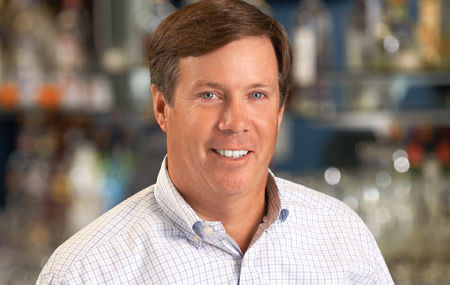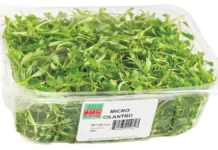
Your family has been in the restaurant business since 1890. Tell me a little about your growth and how the firm grew from beyond Manhattan and into the catering business, for example?
The company was founded by Maxwell Lessing in 1890 and is operated to this day by 15 family members representing three generations of Lessing’s. Our highly diversified company feeds more than 40,000 guests a day at over 100 corporate, educational, country club, and manufacturing plant locations throughout the Northeast. Maxwell Lessing was an innovator. He responded to the explosion of the urban worker population in the 1890’s by opening the first convenient lunch counter. By the late 1920’s, Lessing’s was serving meals to New York’s workforce in as many as 20 locations in the financial district and the New York Stock Exchange.

What led you beyond Wall Street to Long Island and other places?
Eventually we started to bid on local pools on Long Island. Our first big break came in the late ’70s when we bid on a state bid for all inland parks. We secured the contract and ran that contract from 1979-2000 which included the Bethpage golf facility.
In ’79 my uncle Jack saw the old post office in Babylon Village, fell in love with it and we converted it into the café. The Post Office Cafe still exists today and is one of our most successful restaurants.
Did you consider yourselves in the real estate business? The food business? The restaurant business?
It’s definitely a people business, from the employees, to the customers, up to the companies we service. You wind up learning a lot about different businesses. Today, Lessing’s has four distinct divisions – food service, our first, our base, and still our largest; our restaurant, catering, and special event business, and we just recently moved into the franchise business with Blaze Fast Fire’d Pizza.
There do not seem to be many companies as diverse as Lessing’s, why?
That comes from having several different families in the business. Everyone has moved into different segments – two cousins in foodservice for many years, I came up through the catering side, and my brother Mark came up through the restaurant side and cousin Schmiddy on the foodservice side. We recently had another cousin, Lawrence join us to work on the franchise group. That’s how we’ve gotten into different areas and survived 125 years!
You’ve got to be able to attract great people. What’s it like to work for Lessing’s? What’s your approach to recruiting and keeping good people?
Our priority is to promote from within. This allows our employees to grow and challenge themselves and reach new heights. Many have grown within the divisions they started in and others have seen opportunities in other divisions and jumped.

Do you have to be a Lessing to get to the top of the business?
Absolutely not. In the past we had presidents who weren’t Lessing’s. As a Lessing, I started as a dishwasher at the Fire House Restaurant in the early ’80s. My son Michael started just a year ago as an Assistant Manager. As we were celebrating his graduation from Fairfield University, I said, what’s your plan? He said, “I like the family business.” We established a rule that you have to work elsewhere for two years. We want family members to choose the business, not fall into it.
Michael is the first of the 6th generation. He started at The Blue Smoke group in the Flatiron. He began as a server assist who worked up to trainer. Lawrence, my cousin, spent three years at Shake Shack, fast casual, and then joined Lessing’s to head Blaze Pizza. They both made the jump to Lessing’s after Danny Meyer’s tutelage. They were bringing new things to the company. That’s how we work the family side of it.
What role does great food, creative food, play in your success? With the Food Network, there’s a much higher threshold for what’s considered creative and what causes people to return.
We’re always looking at ways to serve the best product, to lead the way. My brother Peter came up through the culinary side. He was able to help adapt our menus, stay on trend and set trends. We’ll send our team out on different field trips, to go to New York City to see what’s new and up and coming.
Many of our restaurants are American grill-style; we sell a lot of burgers. We wanted to improve our burger so we went around and looked at all the different ways the best players in the city prepare their burgers and we made some changes. We teamed up with Pat LaFrieda and made a custom blend and circulated that among our stores.
What brought you into the pizza business?
Eager to grow, we looked at Blaze Pizza, the fast-casual segment, to franchise, we knew it would be a great opportunity for us to grow quickly, opening three or four stores a year in Metro NYC. As we were looking at that segment, we zeroed in on Blaze because we really liked the team and what they were doing, how food was so important to them.
Blaze’s chef, Chef Brad, is nicknamed the “Pizza Whisperer.” He’s taught us a lot. I never went to a virgin olive oil tasting before! We learned how we were going to make the pizza in New York the same as LA. At our first Blaze that opened, our dough was not the right consistency. Chef Brad flew out the next day, tested our water, and said it was too soft. We had to add something back to make it the right consistency. Teaming up with professionals like Chef Brad tells you how we’re trying to stay ahead of the curve. We source locally; we give our chefs a lot of leeway in the development of menus. Chef Bill Muzio, who runs our View restaurant, another young, super-ambitious chef, who’s always bringing new ideas to the table. Our Director of Purchasing,
Steve Fredrich, sources weekly where our vegetables and fish are coming – based on quality, price, location. We use national purveyors but we also use all local fish, local produce, because they’re the best, they’re part of our bid list. We have several different ones in the different regions.
So you have the best of both worlds – running a small business at the same time as having buying power. Can your chefs be as creative as they want to be as long they can create what customers want?
Where we have different menus, we look for best practice. We’ll tell our chefs, especially in our Main Street Restaurants, which all have the same menu, whoever has the best recipe is the winner. If someone comes up with a great recipe, like Chef Muzio did at View Restaurant with his thai calamari, one of the most popular items on the View menu, we share that recipe at all our restaurants
How do you combine the financial and P&L viewpoint from the accounting side of the business with the creativity you bring to the table?
It’s definitely a balance. We’ve automated all our systems; it’s always in process and ever-changing. Obviously, we have to monitor food costs every day, it’s what makes or breaks our business. We have central accounting in Great River, where our headquarters are, so everything is managed from corporate headquarters across the five states. Most decisions are made from corporate but we have area managers in contact with all the chefs. Any time anyone has an idea, we’re wide-open to it. We’re a very flat organization. I can walk into any restaurant, I know the chef, I know the manager. It’s really just keeping an ear to the ground.
What’s the interaction with customers like?
We have a newsletter we send out every month to 35,000 people as to what’s going on across the company. We have a loyalty program, with 18,000 active users, so we’re able to reach out to them through direct emails. We can target right down to an individual restaurant that has its own email list, to catering, where it could be the entire catering group or go out to the entire 35,000. We’re cautions as to how often we reach out because if you email blast too often you get knocked off, so we pay attention to that. We have a social media guru on staff as well as marketing interns each year.
What’s your approach to social media?
It’s a little bit of everything. We have chefs who will do videos, put them up on Instagram, Twitter or youtube, showing how to make calamari, or filet tuna. It seems people are getting into the videos as a much bigger part of social media now. Our managers send us pictures and we post them “live” to facebook and instagram that night. We keep our customers interested. Posting great pictures entices our guests to stop by, keeps us “fresh” and reminds them we are “here.”
The Blaze project is interesting. When you think of pizza, you think of the Northeast as being very local, very ethnic. It’s a brave step to go into something like this.
We knew that, getting into this. When you go out to LA, there are 14+ brands vying for the same 2,500 square feet of space all trying to be the leader. We latched on very quickly because of the management team they have in place. We got right into the franchising of this. We knew it was a risk taking on New York. But New York pizza hasn’t evolved at all so we’re different. You can have New York pizza or you can have Blaze. Ours is thin crust, have it your way. We have two stores open now, and we’re building a third. It’s been very well received so far.
What’s your approach to designing and building out kitchens?
Over the years we’ve developed a great group of vendors — architects, designers, builders but we’ve been the ones in the trenches so we know how kitchens really should be laid out. We do a hybrid, work from within. We actually are consulting on a couple of kitchen build-outs right now. We’ll work with our vendors and equipment suppliers. Bar Boy Products is our main equipment supplier, we’ve been working with them for 30 years. They also help us with design and development. They know what works and doesn’t work, we bring our chefs along and walk them through it. Edward DeFelice SR, Brian Jones and their team have a really good feel for our buisness. That’s how how we do it.
Going forward, what do you see as your new opportunities?
We have a business development team, led by David Lessing, who recently joined us after 30 years on Wall Street. His whole focus is to be out there looking for opportunities for growth. Some of our growth is organic; we call it “coming over the bow.” We’ve done a good job making Lessing’s a household name out on Long Island and in New York. We have to cultivate leads and network with other professionals in our areas, which hopefully leads to acquisition opportunities in the future.
We’ll also do data mining through bidnet to keep aware of all the public RFPs, with a concentration now on the Northeast region.
We’re trying to keep our growth contiguous, where we can move down the coast a little. We’re looking at an RFP in Washington, where we’re not currently. We’re looking for smart growth. We got involved in the franchise because we knew it could be sustained growth. We have a commitment with Blaze. We have the five boroughs, all of Connecticut, all of Long Island, Rockland, Westchester, so we have plenty of territory to build out.























